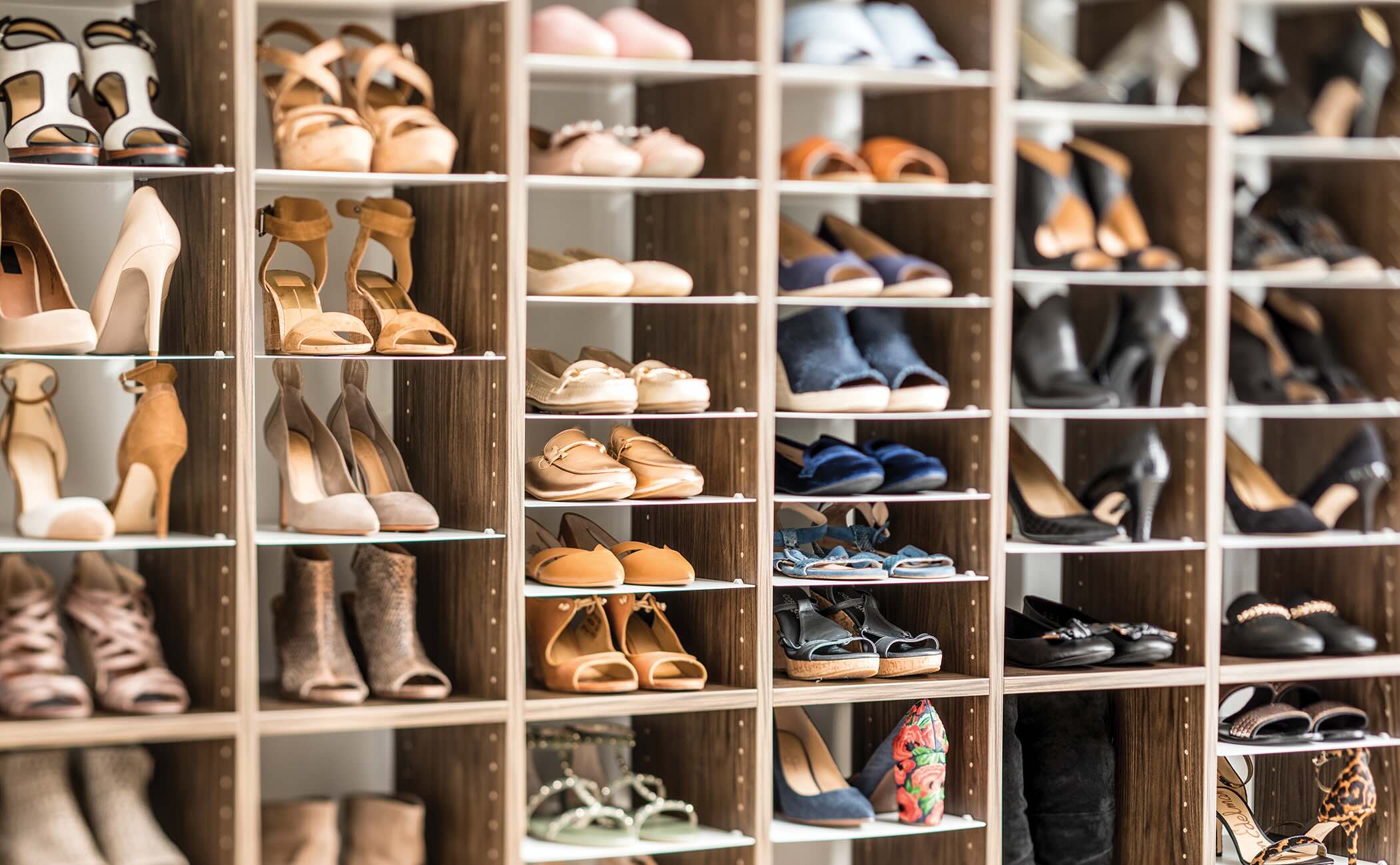

Articles
How To Store Shoes In Closet
Modified: January 22, 2024
Learn the best techniques for storing your shoes in the closet with these helpful articles. Maximize space and keep your shoes organized and protected.
(Many of the links in this article redirect to a specific reviewed product. Your purchase of these products through affiliate links helps to generate commission for Storables.com, at no extra cost. Learn more)
Introduction
Welcome to the world of shoe storage! If you’re tired of tripping over your shoes every time you enter your closet, or if you simply want to find a better way to keep your shoe collection organized, you’re in the right place. In this article, we’ll guide you through the process of storing your shoes in your closet effectively and efficiently.
Having a well-organized shoe storage system can save you time and frustration when looking for a specific pair of shoes. It can also help extend the lifespan of your shoes by protecting them from dust, dirt, and damage. Whether you’re a shoe enthusiast with a vast collection or someone who simply wants to keep their shoes neat and tidy, we’ve got you covered.
The key to effective shoe storage is to have a system that keeps your shoes easily accessible while maximizing the use of space in your closet. There are various shoe storage solutions available, from shelves and racks to hanging organizers and shoe boxes. The right solution will depend on your shoe collection size and the available space in your closet.
In this article, we’ll walk you through the process of choosing the right shoe storage solution, sorting and organizing your shoes, cleaning and preparing them for storage, and storing different types of shoes. We’ll also share some space-saving techniques and tips for maintaining and caring for your shoes while in storage.
So, get ready to transform your cluttered shoe-filled closet into a well-organized space where you can easily find and store your beloved footwear. Let’s dive in and discover the secrets to storing shoes in your closet!
Key Takeaways:
- Transform your cluttered shoe-filled closet into a well-organized space by choosing the right storage solution, sorting and organizing your shoes, and cleaning and preparing them for storage. Utilize space-saving techniques to maximize your closet space and maintain and care for your shoes to ensure they remain in excellent condition.
- Say goodbye to the chaos of shoe clutter and hello to a beautifully organized closet that showcases and cares for your beloved footwear collection. With the right storage solutions, organization techniques, and care, you can create a well-organized environment for your shoes and other belongings.
Read more: How To Store Boots In Closet
Choosing the Right Shoe Storage Solution
When it comes to storing shoes in your closet, having the right storage solution is key. The first step is to assess the available space in your closet and determine what storage options will work best for your needs.
One of the most common shoe storage solutions is a shoe rack or shelving unit. These can be freestanding or mounted on walls or inside the closet doors. Shoe racks come in various sizes and designs, such as tiered racks, slanted shelves, or cubbies. They are great for keeping your shoes visible and easily accessible.
If you’re tight on space, consider utilizing vertical space with an over-the-door shoe organizer. These organizers typically have pockets or compartments to hold individual pairs of shoes. They can be hung on the back of the closet door or on a hook, saving valuable floor or shelf space.
Another popular option is shoe boxes or clear plastic shoe containers. These provide protection from dust and dirt while keeping your shoes neatly organized. Clear containers allow you to see the contents without having to open each box. Stackable shoe boxes are ideal for maximizing vertical space in your closet.
If you have a large collection of heels, consider a shoe rack specifically designed for high heels. These racks have angled tiers or slots, allowing you to display your heels while keeping them secure and preventing them from getting damaged.
For those with limited closet space, under-bed shoe storage can be a lifesaver. These storage solutions are designed to fit neatly under your bed, keeping your shoes out of sight but easily accessible. Look for under-bed storage options with compartments or dividers to keep your shoes organized and prevent them from getting damaged.
Once you’ve determined the type of storage solution that suits your needs, consider the material and quality of the product. Opt for sturdy and durable materials such as wood, metal, or high-quality plastic. Avoid flimsy or cheaply made storage solutions that may not withstand the weight or size of your shoe collection.
Remember, the goal is to keep your shoes organized and protected, so choose a storage solution that provides adequate space, is visually appealing, and fits well within your closet’s dimensions.
Sorting and Organizing Your Shoes
Now that you have chosen the right shoe storage solution, it’s time to sort and organize your shoes. This step is crucial for maintaining a tidy and functional shoe collection. Here are some tips to help you get started:
- Start by decluttering: Take all your shoes out of the closet and assess each pair. Determine which ones you want to keep, donate, or throw away. If you have shoes that are worn out or no longer fit, it’s time to bid them farewell.
- Sort by type: Categorize your shoes into different types, such as sneakers, heels, boots, flats, sandals, and specialty shoes (e.g., running shoes, hiking boots). This will make it easier to find the right pair when you need it.
- Consider frequency of use: Divide your shoes further based on how often you wear them. Keep your everyday shoes and favorites within easy reach, while storing less frequently worn shoes in a less accessible area.
- Arrange by style or color: Another option is to organize your shoes by style or color. This makes it visually appealing and helps you quickly find the pair you’re looking for. Consider grouping similar styles together, such as pumps, wedges, or sneakers.
- Utilize organizational tools: Use dividers, shoe inserts, or bins to keep your shoes separated and prevent them from getting jumbled together. This will also help maintain their shape and protect them from scuffs or scratches.
- Label or photograph: If you have multiple shoe boxes or containers, label them or take photos of the contents and attach them to the outside. This will save you time when searching for a specific pair and prevent the need to open every box.
As you organize your shoes, be mindful of the available space in your chosen storage solution. Avoid overcrowding and ensure that each pair has enough room to breathe. This will help prolong the life of your shoes and make it easier to retrieve them without causing damage.
Remember, the key to maintaining an organized shoe collection is to regularly reassess and declutter. As you buy new shoes or retire old ones, adjust your organization systems to accommodate these changes. This will ensure that your closet remains a functional and clutter-free space for your beloved footwear.
Cleaning and Preparing Your Shoes for Storage
Before storing your shoes, it’s important to clean and prepare them properly. This helps maintain their condition and prevents any dirt or residue from causing damage during storage. Here’s a step-by-step guide to cleaning and preparing your shoes:
- Remove dirt and debris: Start by removing any dirt, dust, or debris from your shoes. Use a soft brush or cloth to gently brush away the dirt from the surface, paying attention to crevices and seams.
- Treat stains and scuffs: If your shoes have stubborn stains or scuffs, use an appropriate cleaner or stain remover. Follow the instructions on the product label and test it on a small, inconspicuous area first to ensure it doesn’t cause any discoloration or damage.
- Wipe down the exterior: Take a clean damp cloth and gently wipe the exterior of your shoes to remove any remaining dirt or cleaning product residue. Make sure to thoroughly dry the shoes before storing them to prevent moisture buildup.
- Clean the interiors: Don’t forget to clean the inside of your shoes as well. Use a cloth or a soft brush to remove any dirt or debris from the lining. If your shoes have removable insoles, take them out and clean them separately.
- Address odors: If your shoes have a lingering odor, sprinkle some baking soda inside and leave it overnight. The baking soda will help absorb any unpleasant smells. Before storing the shoes, shake out the baking soda and ensure they are completely dry.
- Condition leather shoes: For leather shoes, it’s important to keep them moisturized and prevent them from drying out in storage. Apply a leather conditioner or cream to nourish the leather and keep it supple. Follow the product instructions for application and buff off any excess with a clean cloth.
- Lacing and buckling: Properly lace up or buckle any shoes that have these features. This will help maintain their shape and prevent them from becoming misshapen or distorted during storage.
It’s important to note that certain materials require specific care, so always refer to the manufacturer’s instructions or recommendations for cleaning and maintenance. Different shoe types may have different cleaning requirements, especially for specialty shoes like suede or velvet. Take the time to research and understand the best cleaning practices for each type of shoe you own.
By cleaning and preparing your shoes before storing them, you ensure that they remain in good condition and are ready for use when the time comes. Plus, it’s always a pleasure to put on a pair of freshly cleaned and well-cared-for shoes!
Storing Different Types of Shoes
When it comes to storing different types of shoes, it’s important to consider their specific requirements to ensure they remain in optimal condition. Let’s explore some guidelines for storing various types of shoes:
Read more: How To Store Boots In Small Closet
Storing Sneakers and Athletic Shoes
Sneakers and athletic shoes can be stored in a variety of ways, depending on the available space and your personal preference. Some options include:
- Stackable shoe boxes: Place sneakers in individual stackable shoe boxes to keep them organized and protect them from dust and damage. Label the boxes for easy identification.
- Hanging shoe organizers: Use hanging shoe organizers with clear pockets to store sneakers. This saves floor space and allows for easy access.
- Shoe shelves or racks: Arrange sneakers on open shoe shelves or racks, making sure there is enough space between each pair to maintain their shape.
Storing High Heels
High heels require careful storage to maintain their shape and prevent them from getting damaged. Consider the following options:
- Heel-specific shoe racks: Look for shoe racks or organizers specially designed to accommodate high heels. These often have angled tiers or slots to hold the heels securely.
- Individual shoe bags: Slip each pair of high heels into individual shoe bags to protect them from scratches and dust. Stack the bags neatly in a shoebox or on a shelf.
- Clear shoe boxes: Use clear shoe boxes to store high heels, with each pair placed in its own box. This makes it easy to see and locate the desired pair.
Storing Boots
Boots require extra care to preserve their shape and prevent creasing. Here are some options for storing boots:
- Boot inserts: Place boot inserts or rolled-up magazines inside each boot to help them maintain their shape and prevent sagging.
- Boot stands: Invest in boot stands or holders specifically designed to keep your boots upright and prevent them from flopping over.
- Boot hangers: Utilize boot hangers, which clip onto the tops of boots, allowing you to hang them on a closet rod to save floor space.
Storing Flats and Sandals
Flats and sandals are generally easier to store due to their flexible nature. Consider the following storage options:
- Shoe shelves or racks: Arrange flats and sandals on open shoe shelves or racks, ensuring each pair has enough space to prevent them from getting squashed or tangled.
- Stackable shoe boxes: Place flats and sandals in stackable shoe boxes to keep them organized and protected. This is a great option if you have limited closet space.
- Hanging pocket organizers: Hang a pocket organizer on the back of your closet door to store flats and sandals. Each pair can have its own pocket, making them easily visible and accessible.
Read more: How To Store Thigh High Boots
Storing Specialty Shoes (e.g., running shoes, hiking boots)
Specialty shoes, such as running shoes or hiking boots, may have specific care instructions. Generally, it’s best to keep them clean and store them following the guidelines mentioned earlier for their respective types of shoes. Additionally, ensure they are completely dry before storing them to prevent moisture buildup.
Remember, regardless of the shoe type, it’s important to provide ample space and avoid overcrowding. This helps maintain the shape and condition of your shoes while making it easier to select the right pair when you need them.
Storing Sneakers and Athletic Shoes
Sneakers and athletic shoes are a staple in many wardrobes, and proper storage is essential to keep them in good condition. These types of shoes often require a bit more space due to their bulkiness. Here are some tips for storing sneakers and athletic shoes:
- Individual shoe boxes: Consider using individual shoe boxes to store sneakers and athletic shoes. This not only keeps them organized but also protects them from dust and potential damage. Label the boxes or take photos of the shoes and attach them to the outside for easy identification.
- Stackable shoe racks: If you have a large sneaker collection, consider using stackable shoe racks. These allow you to easily see and access your shoes while optimizing vertical space in your closet or room. Ensure that each pair has enough room to prevent them from getting squished or misshapen.
- Hanging shoe organizers: Hanging shoe organizers with clear pockets are a great option for storing sneakers and athletic shoes if you’re short on floor space. Hang the organizer on the back of your closet door or a hook, and slip each pair of shoes into its own pocket. This keeps them visible and easily accessible.
When storing sneakers and athletic shoes, it’s important to consider their specific needs:
- Air circulation: Sneakers and athletic shoes need proper air circulation to prevent moisture buildup and unpleasant odors. Avoid packing them too tightly in boxes or organizers that restrict air circulation.
- Keep clean: Before storing your sneakers and athletic shoes, make sure they are clean and dry. Remove any dirt or debris and allow them to air out completely to prevent the growth of mold or bacteria.
- Retain shape: To help your sneakers and athletic shoes retain their shape, consider using shoe trees or stuffing them with acid-free tissue paper or clean socks. This prevents them from becoming misshapen or losing their form over time.
- Store by type or frequency of use: You can organize your sneakers and athletic shoes by type (e.g., running shoes, basketball shoes) or by frequency of use. Keep your frequently worn pairs easily accessible and store less frequently worn ones in a more tucked-away location.
By following these tips, you can ensure that your cherished sneakers and athletic shoes stay in top-notch condition and are ready to perform when it’s time to hit the streets or the gym!
Storing High Heels
High heels are not only fashionable but also delicate and require special care when it comes to storage. By storing them properly, you can prevent damage and maintain their aesthetic appeal. Here are some tips for storing high heels:
- Heel-specific shoe racks: Invest in shoe racks or organizers designed specifically for high heels. These often have angled tiers or slots, allowing you to display your heels while keeping them secure and preventing them from getting damaged. Make sure the rack provides enough space between each pair to avoid any rubbing or scuffing.
- Individual shoe bags: Slip each pair of high heels into individual shoe bags before storing them. This helps protect them from scratches and dust. You can use fabric shoe bags or even repurpose pillowcases for this purpose. Stack the bags neatly in a shoebox or on a shelf.
- Clear shoe boxes: Clear shoe boxes are an excellent option for storing high heels. Place each pair in its own box to keep them separated and easily visible. This is especially helpful if you have a large collection and want to quickly locate a specific pair.
- Heel protectors: Consider using heel protectors to prevent the heels of your shoes from getting damaged or scratched. These small caps fit over the ends of the heels and provide an extra layer of protection, particularly when storing high heels with pointed or thin heels.
Additional tips for storing high heels:
- Avoid stacking: High heels are best stored individually or side by side to prevent them from becoming misshapen or losing their balance. Stacking them on top of one another can cause pressure on the heels and may lead to damage or distortion.
- Store in a cool, dry place: High heels should be stored in a cool, dry environment to prevent moisture damage or potential molding. Avoid areas prone to high humidity, such as basements or bathrooms.
- Keep away from direct sunlight: Prolonged exposure to direct sunlight can fade and damage the material of your high heels. Store them in a location away from direct sunlight or use curtains or blinds to shield them if necessary.
- Rotate the collection: If you have a large collection of high heels, consider rotating them rather than leaving them stored in the same position for an extended period. This helps prevent excessive pressure on the same area of the shoes and allows them to maintain their shape and stability.
By following these tips, you can ensure that your high heels remain in excellent condition and are always ready to elevate your style!
Storing Boots
Boots are a staple in many wardrobes and can be quite an investment. Proper storage is essential to preserve their shape and prolong their lifespan. Here are some tips for storing boots:
- Boot inserts: To help your boots maintain their shape and prevent them from slouching or developing creases, consider using boot inserts or stuff them with acid-free tissue paper. This helps them retain their structure while in storage.
- Boot stands or holders: Invest in boot stands or holders designed to keep your boots upright and prevent them from flopping over. These stands provide support to the boot shaft, keeping it straight and minimizing any creasing or folds.
- Boot hangers: Some types of boots, such as knee-high or over-the-knee boots, can be hung using boot hangers. These hangers clip onto the tops of the boots and allow you to hang them from a closet rod, saving valuable floor space.
- Vertical boot storage: If you have limited closet space, consider using vertical boot storage solutions. These are specially designed racks or organizers that allow you to store boots in an upright position. They typically have individual slots or compartments to prevent the boots from touching each other.
- Protective bags or covers: To prevent dust or damage, consider storing your boots in protective bags or covers. You can use fabric dust bags or repurpose old pillowcases to shield your boots from dirt and light exposure. Make sure to clean and dry your boots before placing them in the bags or covers.
- Store in a cool, dry place: Find a storage area for your boots that is cool, dry, and well-ventilated. Avoid extreme temperatures or areas with high humidity, as these can promote mold or mildew growth and cause damage to the boots.
- Rotate your boots: If you have multiple pairs of boots, it’s a good idea to rotate the ones you wear regularly. This prevents excessive wear on one pair and allows all your boots to receive equal attention and ventilation.
Remember, proper cleaning and maintenance before storing your boots is essential to ensure they stay in optimal condition. Clean them thoroughly, remove any dirt or stains, and allow them to dry completely before storing them. This helps prevent the growth of mold or mildew and ensures that your boots are ready to wear when the season rolls around again.
By following these storage tips, you can keep your boots looking and feeling great, ready to step out in style whenever you need them!
Read more: How To Store Knee High Boots
Storing Flats and Sandals
Flats and sandals are popular choices for casual and warm-weather footwear. Proper storage of these types of shoes can help maintain their shape and condition. Here are some tips for storing flats and sandals:
- Shoe shelves or racks: Utilize open shoe shelves or racks to store flats and sandals. Arrange them neatly, allowing for enough space between each pair to prevent them from getting squashed or tangled. This option makes it easy to see and access your shoes.
- Stackable shoe boxes: Store flats and sandals in stackable shoe boxes to keep them organized and protect them from dust and potential damage. Using clear shoe boxes allows you to easily identify the pair you want without having to open each box.
- Hanging pocket organizers: Hang a pocket organizer on the back of your closet door or a hook to store flats and sandals. Each pair can have its own pocket, making them visible and easily accessible. This is a great space-saving option, especially if your closet is limited in space.
- Separate compartments or hangers: Look for storage solutions that offer separate compartments or hangers to keep flats and sandals organized. This helps prevent misplacement or mixing of pairs, making it easier to find the specific shoes you’re looking for.
- Paper or cloth stuffing: To help your flats and sandals maintain their shape, consider stuffing them with acid-free tissue paper, clean socks, or cloth to prevent them from folding or losing their form. This is particularly beneficial for delicate sandals or flats made of soft materials.
- Keep them clean and dry: Before storing your flats and sandals, ensure they are clean and dry. Remove any dirt or debris and wipe them down with a clean cloth. If your sandals have fabric portions, ensure they are completely dry to prevent the growth of mold or mildew.
When storing flats and sandals, remember to be mindful of the available space and avoid overcrowding. This not only helps maintain the structure of the shoes but also makes it easier to select the pair you want without causing any damage.
By following these tips, you can ensure that your flats and sandals remain in excellent condition and are ready to complete your stylish summer outfits or casual looks throughout the year!
Storing Specialty Shoes (e.g., running shoes, hiking boots)
Specialty shoes, such as running shoes or hiking boots, often require specific care and storage to maintain their performance and prolong their lifespan. Here are some tips for storing specialty shoes:
- Clean and dry: Before storing any specialty shoes, make sure they are clean and dry. Remove any dirt or debris and allow them to air out completely. This is especially important for hiking boots, as any leftover moisture can lead to mold or mildew.
- Keep them in shape: Specialty shoes like running shoes or hiking boots often have specific structures or support features that aid in their performance. Preserve their shape by using shoe inserts or stuff them with acid-free tissue paper. This helps them maintain their form while in storage.
- Store in a cool, dry area: Find a storage area for your specialty shoes that is cool, dry, and well-ventilated. Extreme temperatures or high humidity can damage the materials and compromise the performance of the shoes. Avoid storing them in basements or garage areas prone to moisture or temperature fluctuations.
- Organized storage: Keep your specialty shoes organized by categorizing them based on activity or type. If you have multiple pairs, consider using separate compartments or shoe racks to avoid mixing them up. This makes it easier to find the right pair when you need them.
- Protect sensitive soles: Some specialty shoes have sensitive soles that can be damaged or marked by contact with other shoes or surfaces. Use shoe bags or wraps to protect the soles from scratches, scuffs, or color transfer. Be sure to clean the soles before storing to prevent any dirt or debris from adhering to them.
- Proper ventilation: Specialty shoes, especially running shoes, benefit from proper ventilation to prevent odor buildup. Avoid enclosing them in airtight containers or plastic bags for long periods, as this can promote bacterial growth. Choose storage solutions that allow for some air circulation to keep your shoes fresh.
- Check manufacturer recommendations: It’s always a good idea to refer to the manufacturer’s recommendations or care instructions specific to your specialty shoes. They may provide additional tips or guidelines for storing and maintaining the particular shoe type.
By following these tips, you can ensure that your specialty shoes remain in great condition, ready to support you during your favorite activities and adventures.
To store shoes in a closet, use clear plastic bins or shoe racks to keep them organized and visible. This will help prevent damage and make it easier to find the pair you want.
Utilizing Space-Saving Techniques
When it comes to storing shoes in your closet, maximizing space is key. Here are some space-saving techniques that will help you make the most of your available closet space:
- Utilize vertical space: Make use of vertical space by installing shelves or racks that go all the way up to the ceiling. This allows you to store shoes in a stacked manner, utilizing the height of your closet effectively.
- Over-the-door storage: Take advantage of the back of your closet door by hanging an over-the-door shoe organizer. These organizers have pockets or compartments that can hold multiple pairs of shoes, freeing up valuable floor or shelf space.
- Under-bed storage: If you have limited closet space, consider utilizing under-bed storage for shoes. Use shallow storage containers or crates designed specifically for under-bed use to keep your shoes organized and easily accessible while keeping your closet clutter-free.
- Use clear shoe boxes: Clear shoe boxes provide a great way to store shoes while keeping them visible and protected. These stackable boxes not only save space but also allow you to quickly locate the desired pair without having to open multiple boxes.
- Hanging shoe shelves or pockets: Hang shoe shelves or hanging pockets on a closet rod. These can be used to store shoes vertically, providing easy access and keeping your closet floor clear.
- DIY shoe storage: Get creative and make your own shoe storage solutions. Repurpose bookshelves, wine crates, or even PVC pipes to create custom shoe racks or shelves that fit your specific closet dimensions.
- Double-duty furniture: Look for furniture pieces that can serve multiple purposes, such as ottomans or benches with hidden storage compartments. These can be used to store shoes while providing additional seating or storage for other items.
In addition to these space-saving techniques, it’s important to regularly declutter and donate or discard shoes that you no longer wear or need. This not only frees up storage space but also keeps your shoe collection organized and manageable.
Remember to consider your specific closet layout and available space when choosing which techniques to implement. Every closet is unique, so adapt these ideas to best suit your needs and maximize your shoe storage space.
Maintaining and Caring for Your Shoes in Storage
Proper maintenance and care are essential for keeping your shoes in good condition while they are in storage. Here are some tips to help you maintain and care for your shoes:
- Regularly check on your shoes: It’s important to periodically check on your stored shoes to ensure they remain in good condition. Look for any signs of damage, moisture, or pests. This allows you to address any issues promptly and prevent further damage.
- Rotate your shoes: If you have a large shoe collection, it’s a good idea to rotate the shoes you wear regularly. This helps prevent excessive wear on a few pairs and allows all your shoes to be used regularly, preventing them from becoming misshapen or worn out.
- Keep away from moisture: Moisture can cause mold, mildew, and other damage to your shoes. Store them in a dry area with good ventilation. Consider using moisture-absorbing products such as silica gel packets or dehumidifiers to help maintain a dry environment.
- Avoid extreme temperature changes: Rapid changes in temperature can cause the materials of your shoes to expand or contract, leading to damage and warping. Store your shoes in an area with stable temperature conditions to ensure their longevity.
- Regularly clean and condition: Even when in storage, it’s important to clean and condition your shoes periodically to remove any dirt or dust that may have accumulated. Follow the manufacturer’s instructions for cleaning and conditioning, taking into account the specific material of each pair.
- Protect from direct sunlight: Prolonged exposure to direct sunlight can cause fading and damage to your shoes. Keep them away from windows or place them in opaque containers to protect them from UV rays.
- Prevent pests: Take measures to prevent pests, such as moths or insects, from damaging your shoes. Consider using natural pest deterrents like cedar chips, lavender sachets, or mothballs placed near your stored shoes.
- Store in breathable materials: When storing your shoes, choose breathable materials such as fabric shoe bags or wrapping them with acid-free tissue paper. Avoid using plastic bags or covers that can trap moisture and lead to the growth of mold or mildew.
- Do not stack heavy items on top: Avoid stacking heavy items or placing heavy boxes on top of your stored shoes. This can cause unnecessary pressure and deformation.
By following these tips, you can ensure that your shoes remain in excellent condition while in storage and are ready to be worn when the time comes. Taking proper care of your shoes will help them last longer and maintain their appearance and functionality.
Read more: How To Store Sneakers
Tips for Maximizing Closet Space
Having limited closet space can be a challenge, but with some smart organization and utilization techniques, you can make the most of the space you have. Here are some tips for maximizing closet space:
- Purge and declutter: Start by decluttering your closet and getting rid of items you no longer wear or need. Be ruthless in your decision-making process and only keep items that you truly love and use regularly. This will free up valuable space for your shoes and other belongings.
- Use vertical space: Make the most of the vertical space in your closet by installing double hanging rods or utilizing adjustable shelving units. This allows you to stack clothing and accessories and effectively utilize the height of your closet.
- Invest in closet organizers: Consider investing in closet organizers such as shelves, drawers, and baskets. These can help you create designated spaces for specific items, making your closet more efficient and easier to navigate.
- Use slim hangers: Replace bulky hangers with slim hangers to save space. Slim hangers take up less room, allowing you to fit more items on your closet rod. This creates additional space for your shoes or other items.
- Utilize the back of the closet door: Make use of the back of your closet door by installing hooks, racks, or an over-the-door organizer. This provides extra storage space for accessories, such as scarves, belts, or handbags, freeing up space inside the closet.
- Group similar items together: Grouping similar items together can help you maximize space and easily locate what you need. For example, group all your shoes together, all your belts together, and all your handbags together.
- Utilize storage bins and dividers: Use storage bins and dividers to keep smaller items or accessories organized. This helps to maximize space and prevents items from becoming tangled or misplaced.
- Install additional lighting: Good lighting inside your closet can make it easier to see and access your belongings. Install additional lighting, such as LED strip lights or battery-operated motion sensor lights, to illuminate the space effectively.
- Rotate seasonal items: If you have limited space, consider storing seasonal items, such as winter coats or bulky sweaters, in vacuum-sealed bags or under-bed storage during the off-season. This frees up space for items you currently need.
- Use clear storage containers: Clear storage containers allow you to see what’s inside without having to open them. Use them to store items like scarves, hats, or accessories, keeping them organized and easily accessible.
By implementing these tips and organizing your closet with efficiency in mind, you can make the most of your space and create a well-organized environment for your shoes and other belongings.
Conclusion
Storing shoes in your closet doesn’t have to be a daunting task. With the right storage solutions, organization techniques, and care, you can transform your cluttered shoe collection into a well-organized and functional space.
Choosing the right shoe storage solution is the first step. Consider your shoe collection size and available space in your closet. Whether it’s shoe racks, shelves, hanging organizers, or clear shoe boxes, finding the right solution will help keep your shoes easily accessible and protected.
Sorting and organizing your shoes is crucial for maintaining an efficient and tidy closet. Categorize your shoes by type, style, or frequency of use to make it easier to locate specific pairs. Utilize organizational tools like dividers, inserts, or labels to keep your shoes separated and prevent them from getting damaged.
To keep your shoes in the best condition, it’s important to clean and prepare them before storing. Remove dirt, treat stains, and ensure they are completely dry. Different shoe materials may require specific care, so consult the manufacturer’s instructions for proper cleaning and maintenance.
When it comes to storing different types of shoes, consider their specific needs. Use heel-specific racks for high heels, boot stands for boots, and breathable storage solutions for flats and sandals.
Utilizing space-saving techniques like vertical storage, over-the-door organizers, and under-bed storage can help maximize your closet space. Regularly decluttering and donating or discarding shoes you no longer wear also helps keep your collection manageable.
Maintaining and caring for your shoes while in storage is crucial. Check on them periodically, rotate the shoes you wear, keep them clean and dry, and protect them from pests, sunlight, and extreme temperatures.
By implementing these tips, you can create a well-organized closet that not only protects and extends the life of your shoes but also makes it easier for you to find and enjoy your favorite pairs.
So, say goodbye to the chaos of shoe clutter and hello to a beautifully organized closet that showcases and cares for your beloved footwear collection. Happy shoe storing!
Frequently Asked Questions about How To Store Shoes In Closet
Was this page helpful?
At Storables.com, we guarantee accurate and reliable information. Our content, validated by Expert Board Contributors, is crafted following stringent Editorial Policies. We're committed to providing you with well-researched, expert-backed insights for all your informational needs.
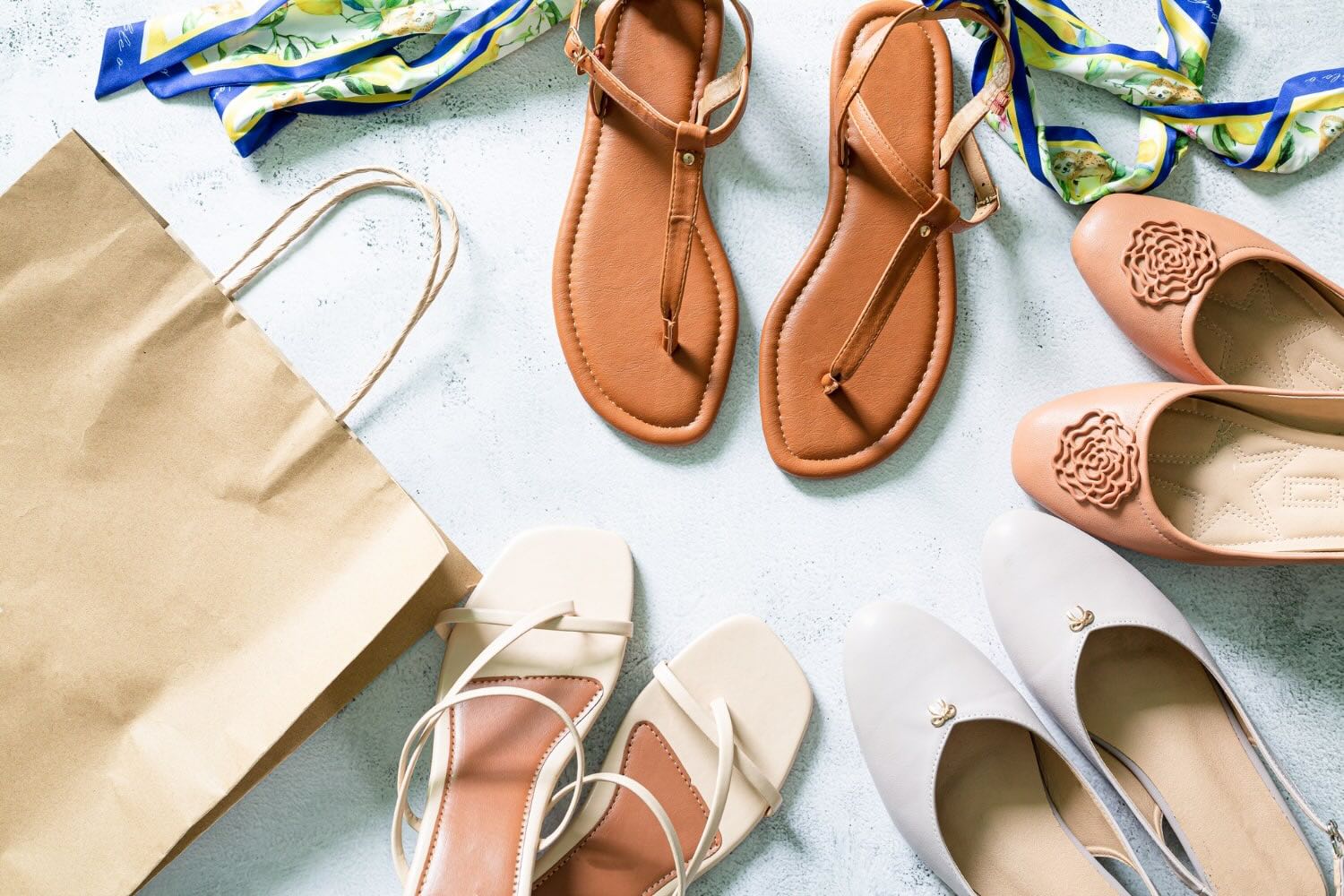
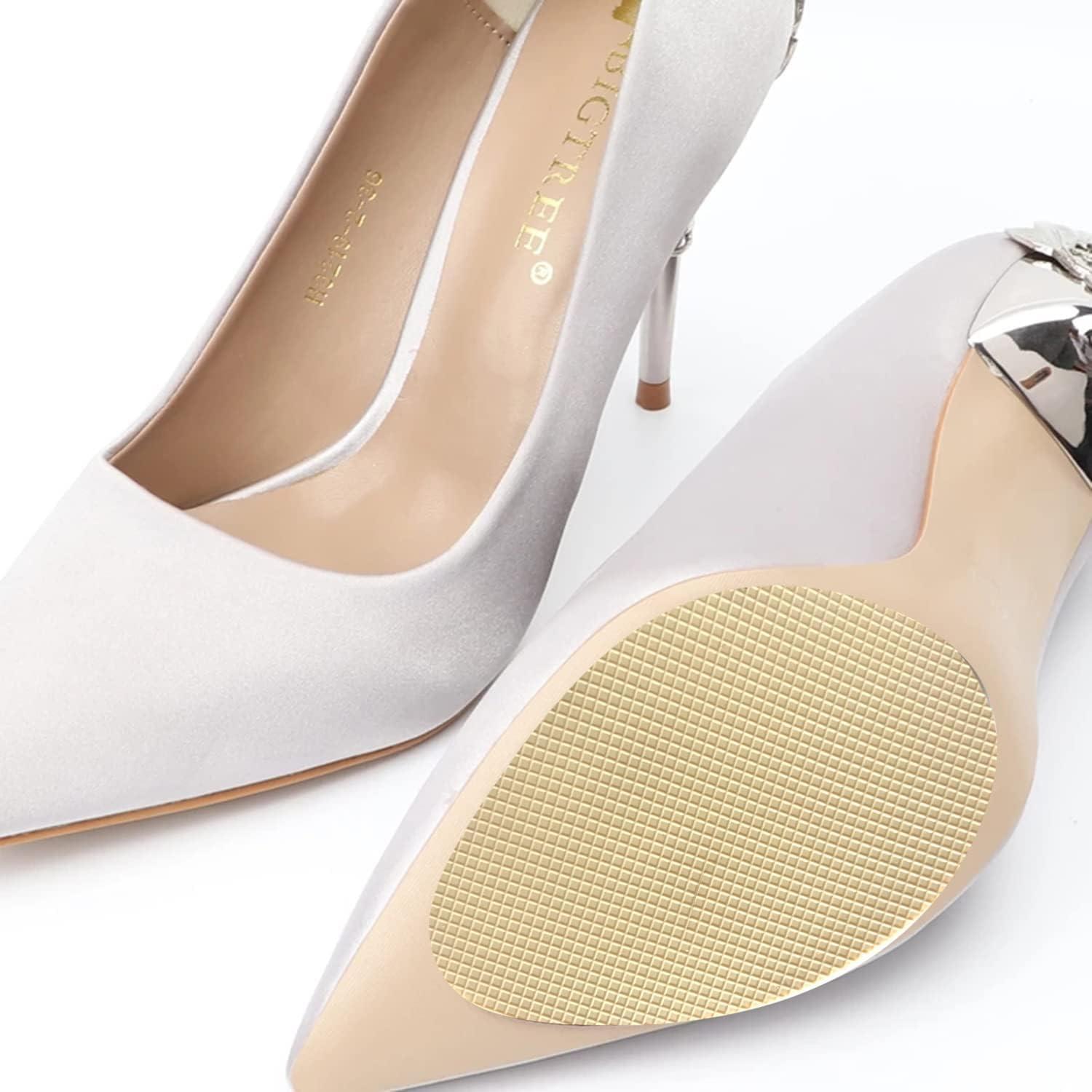
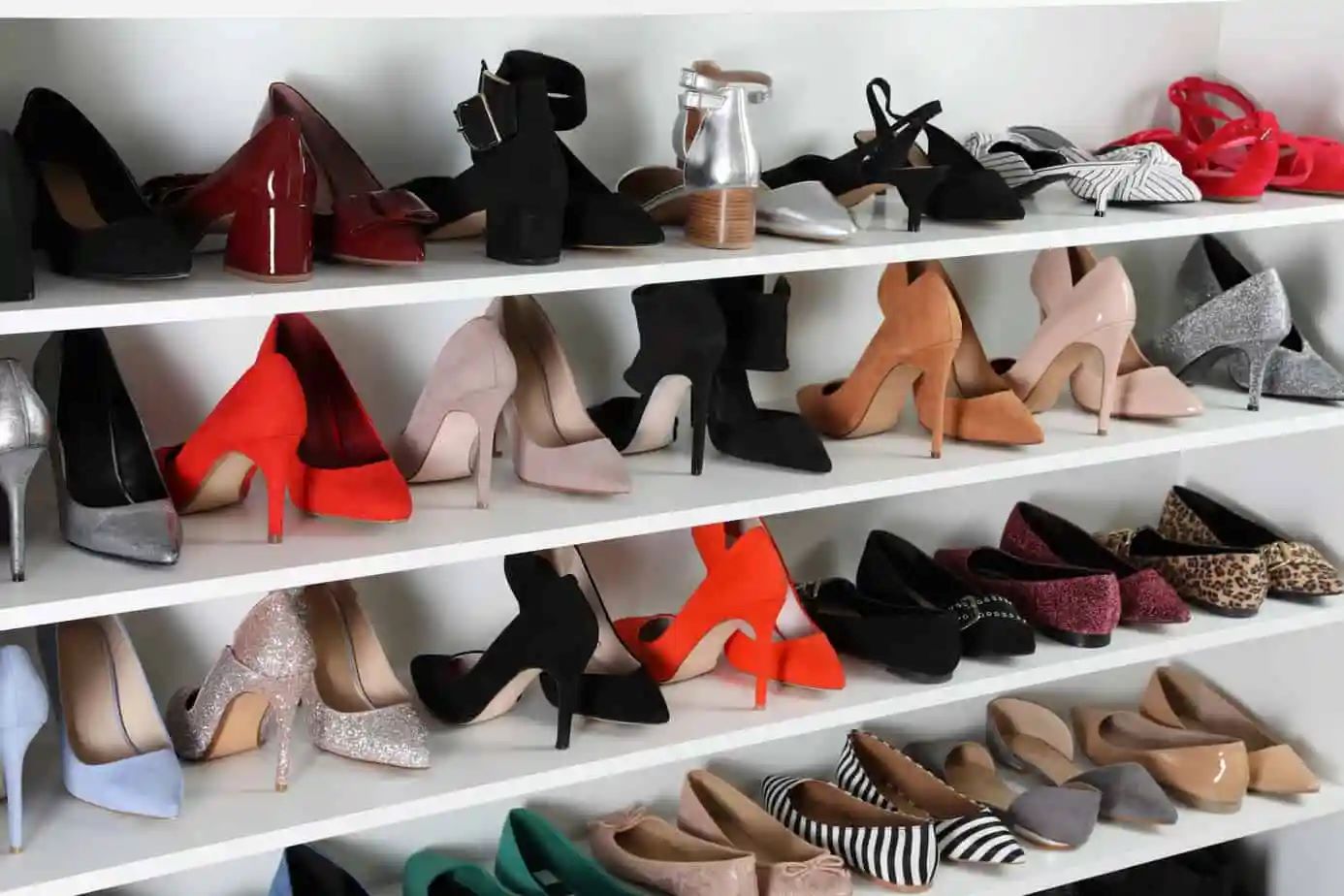
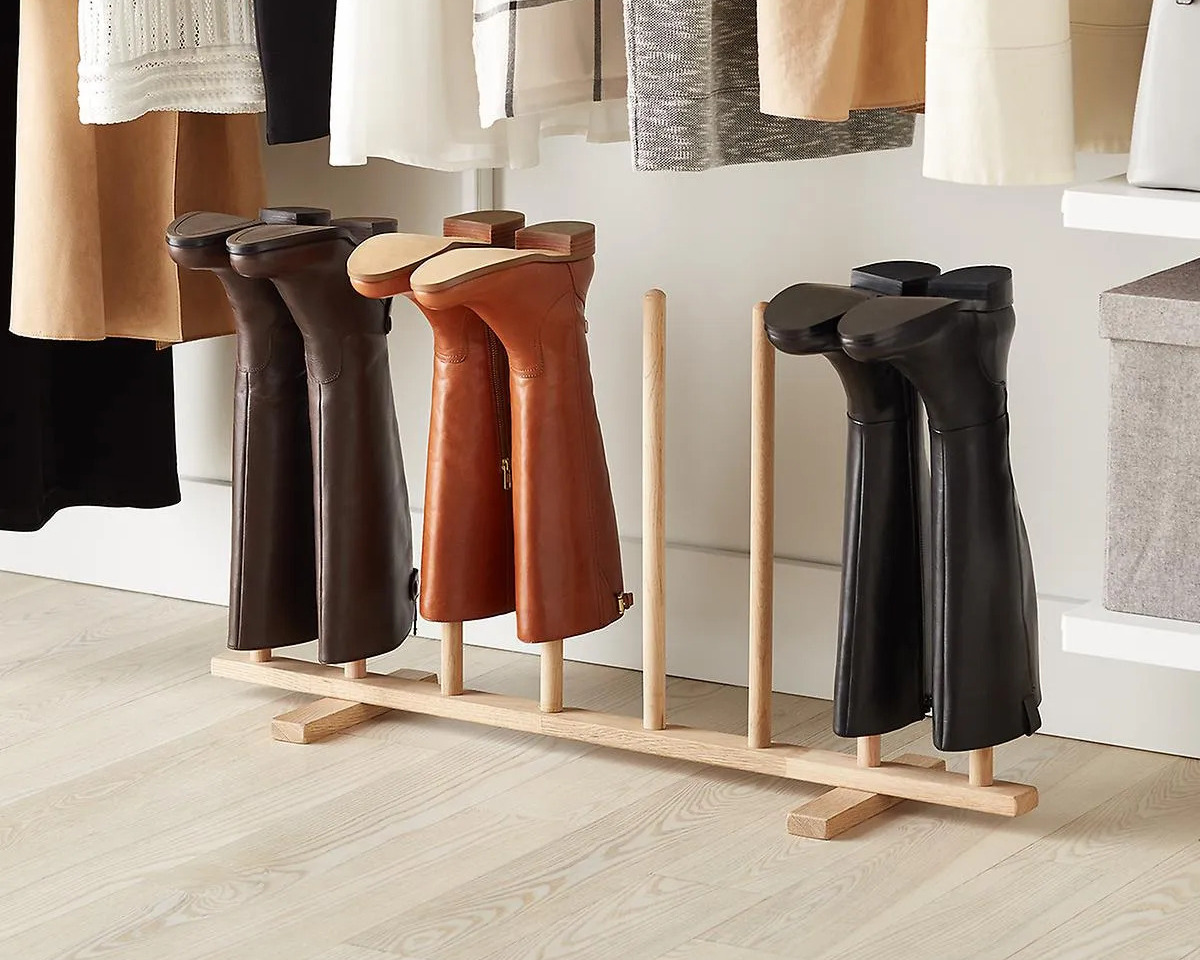
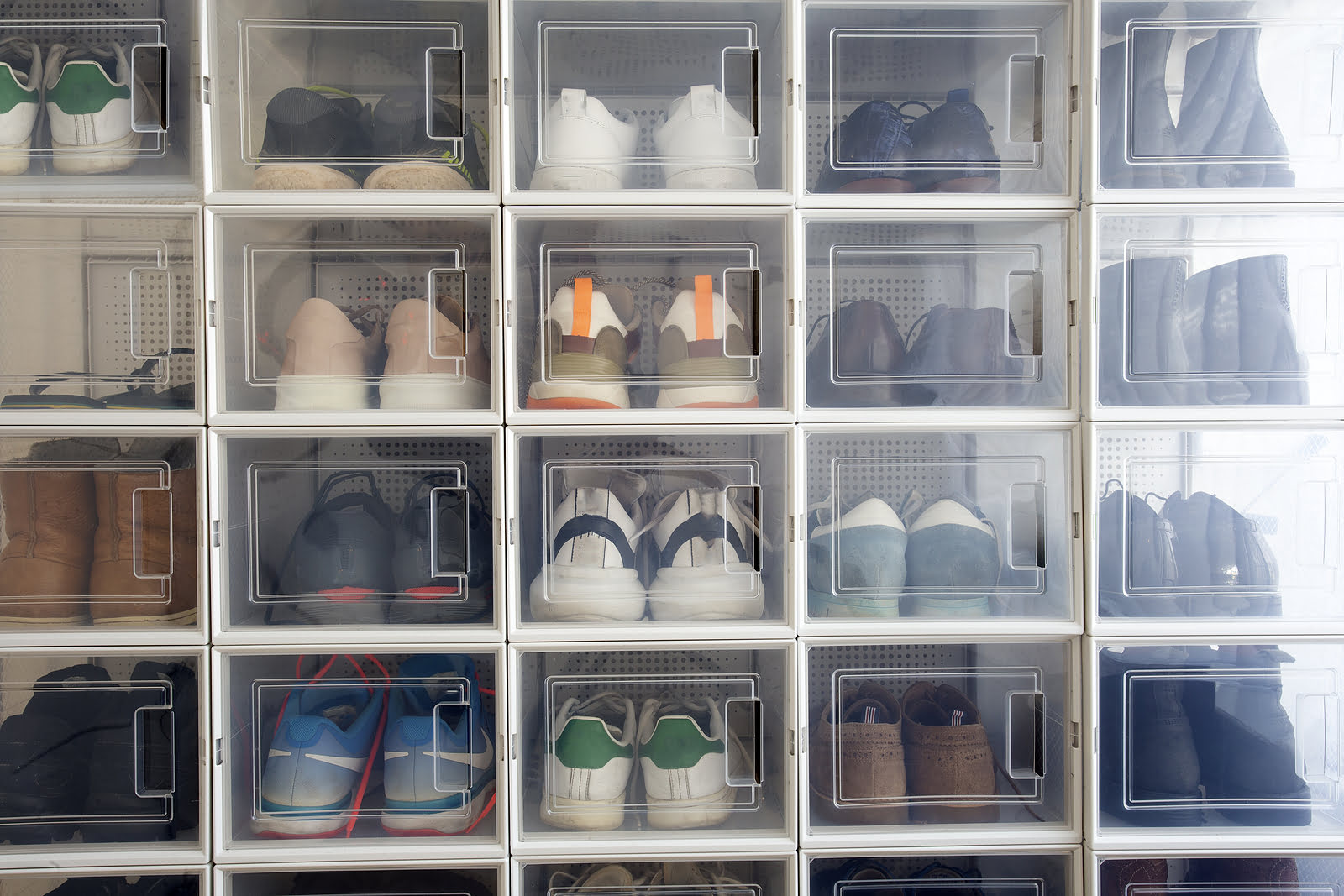
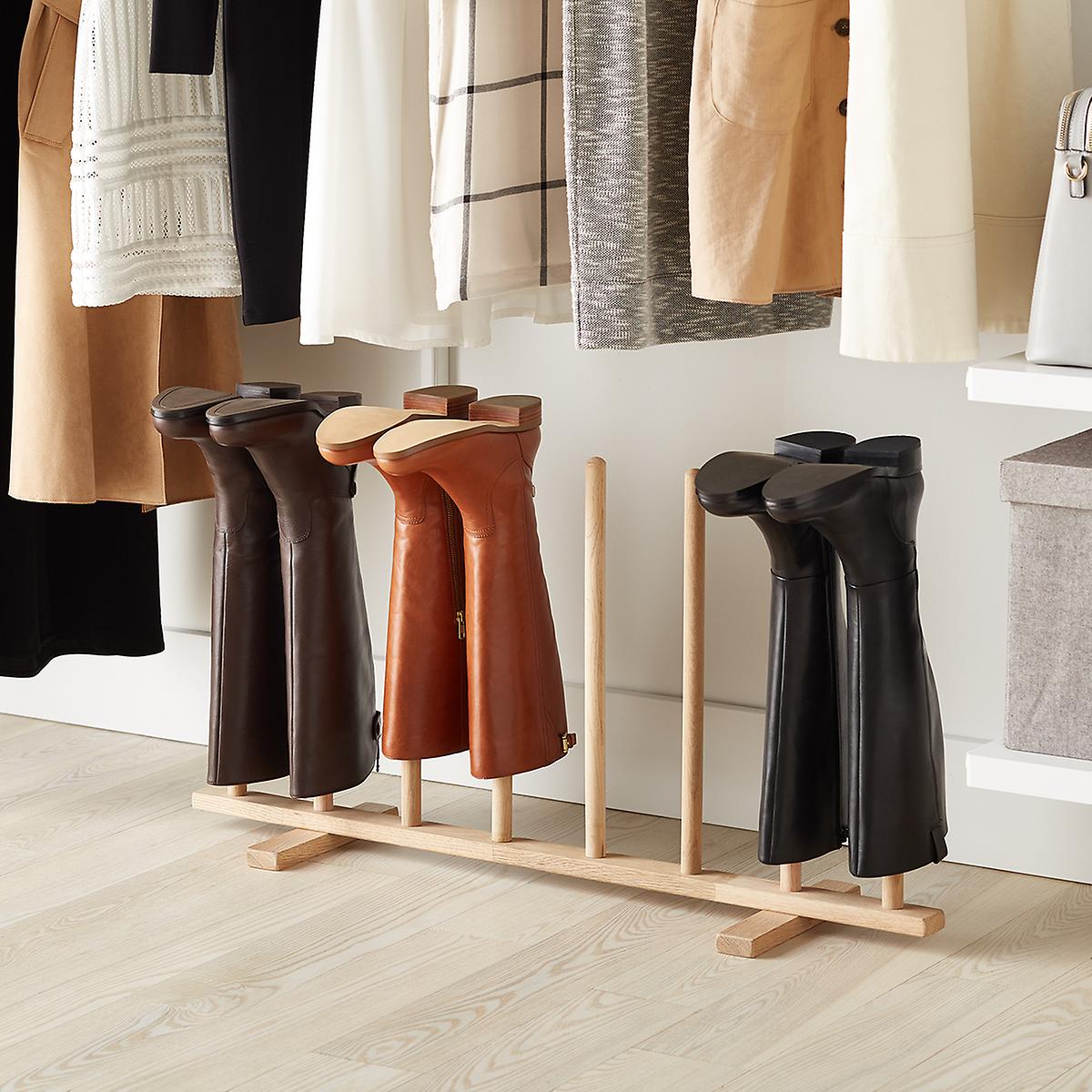
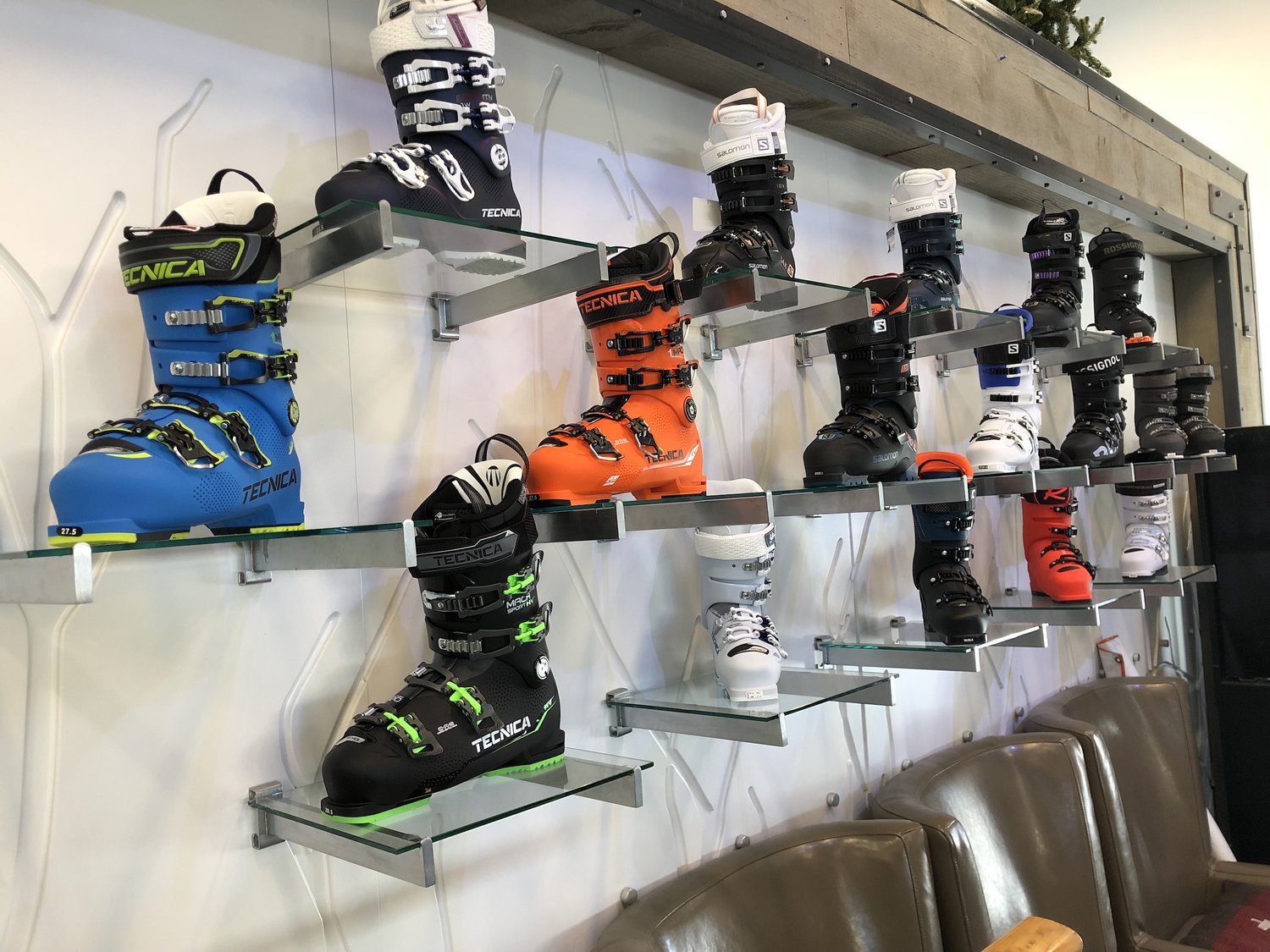
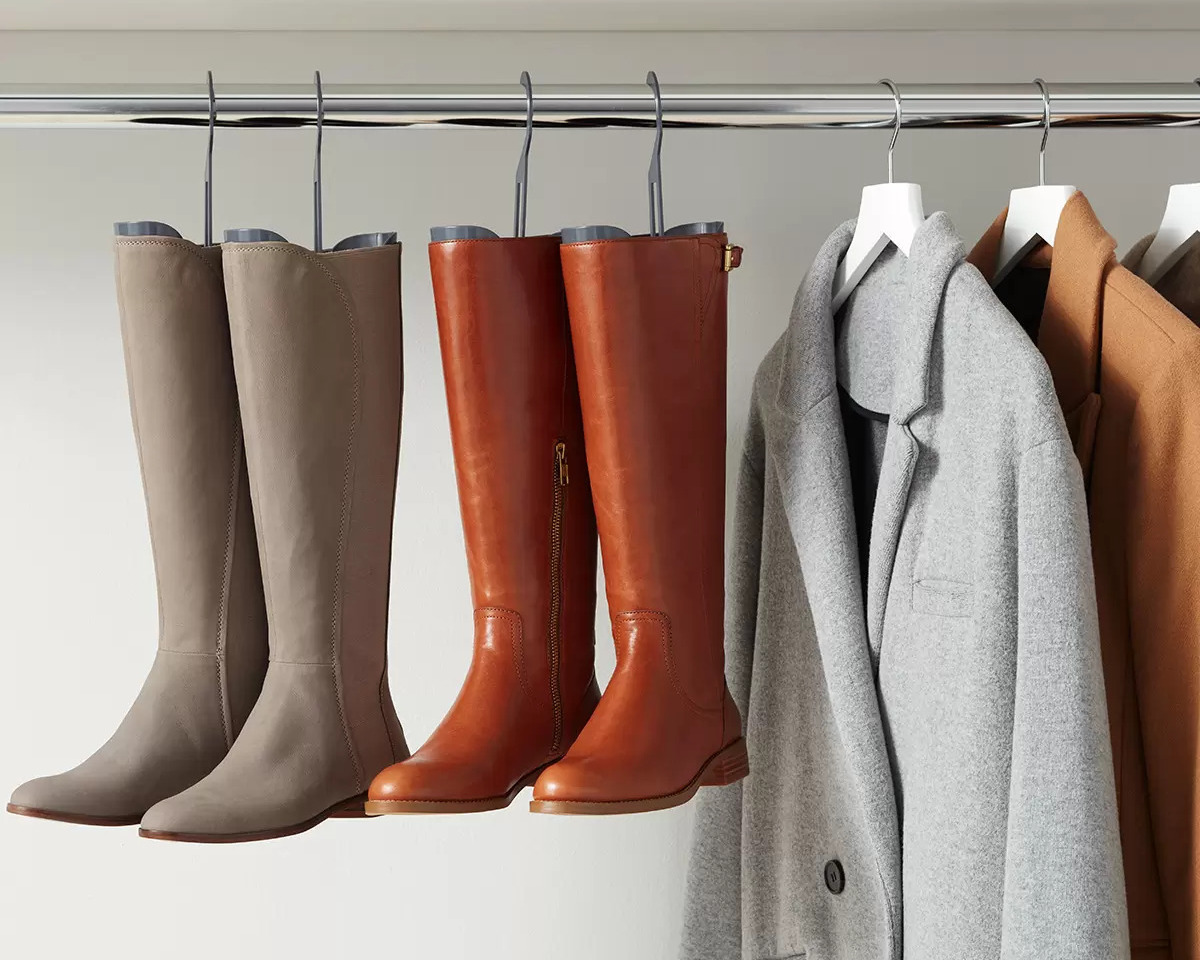
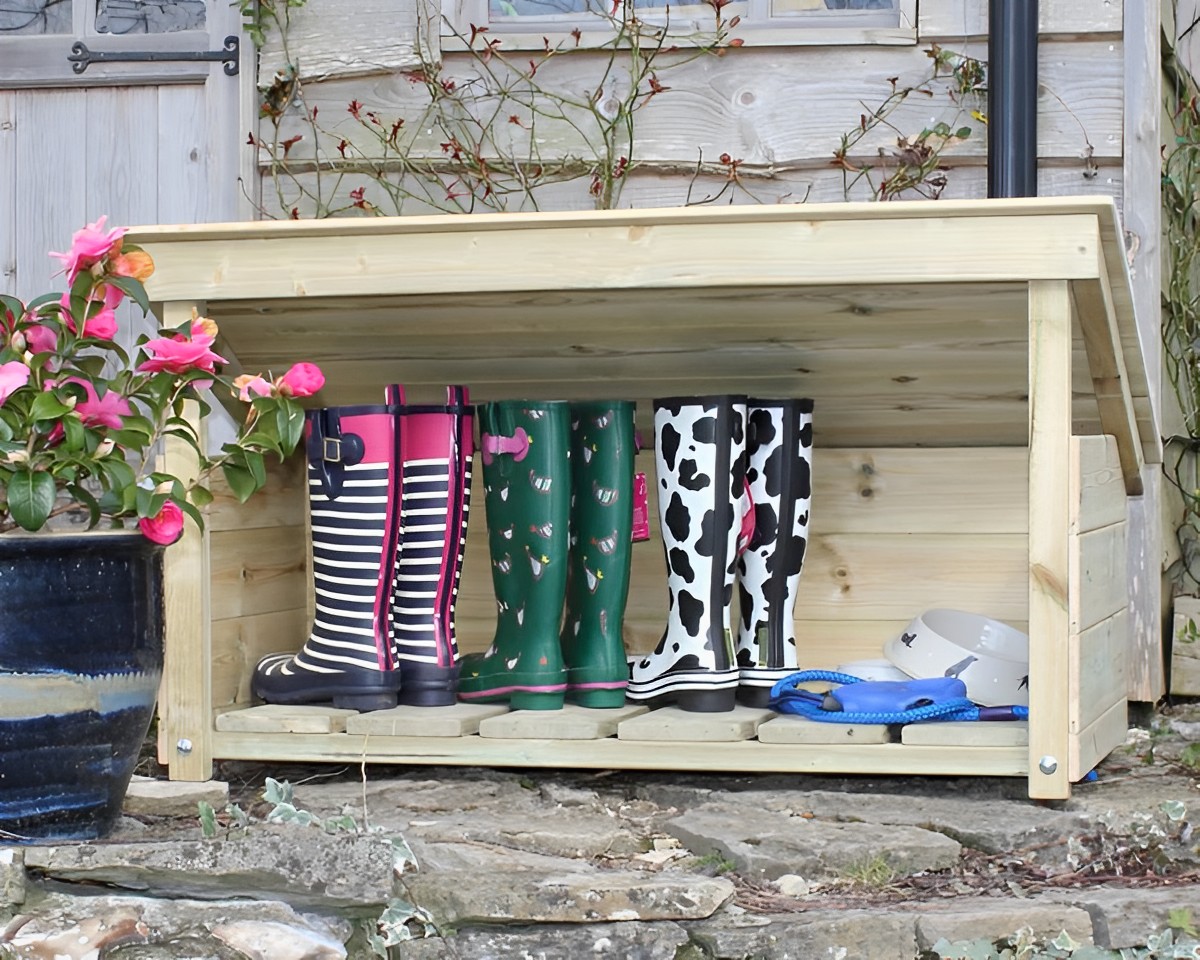
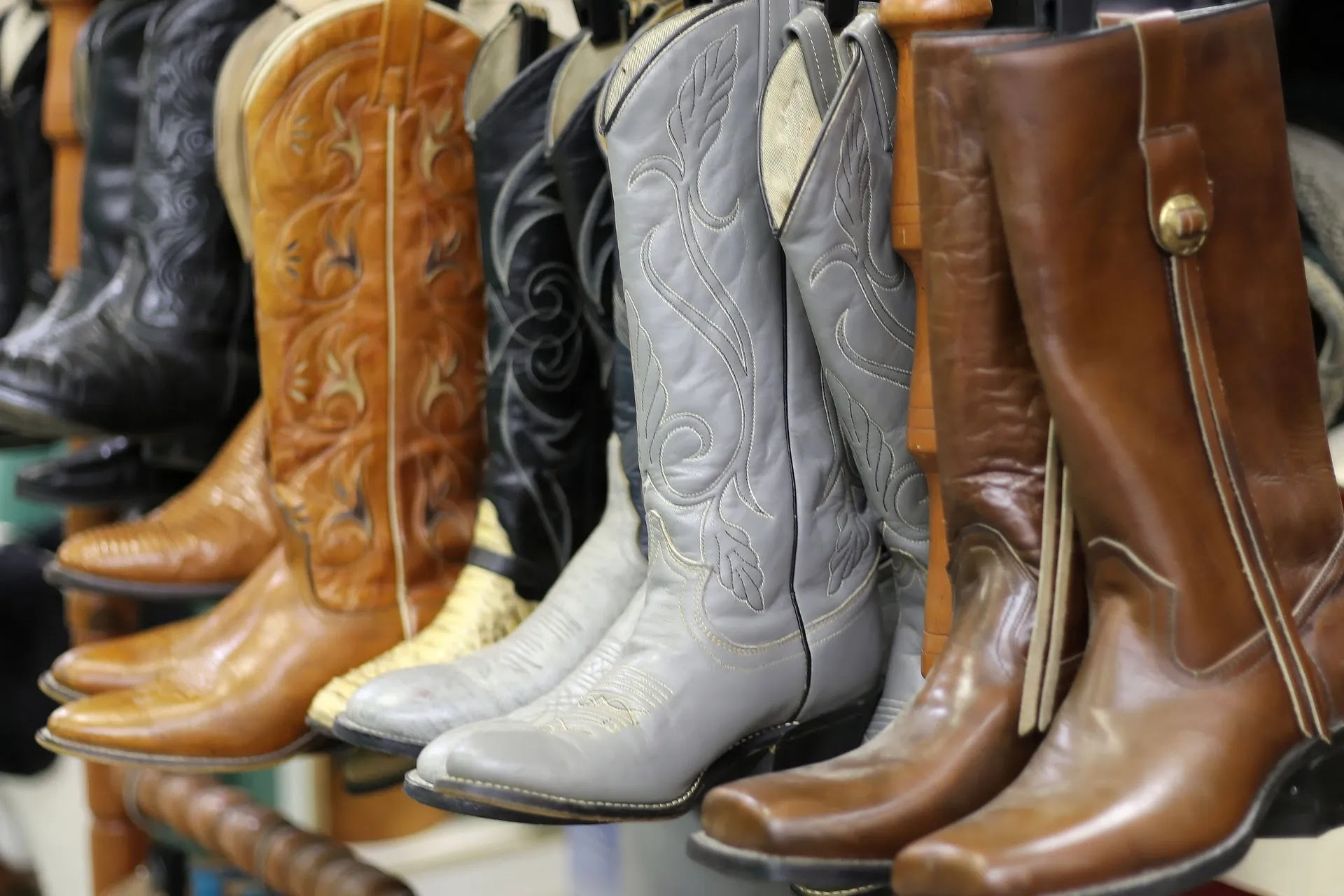
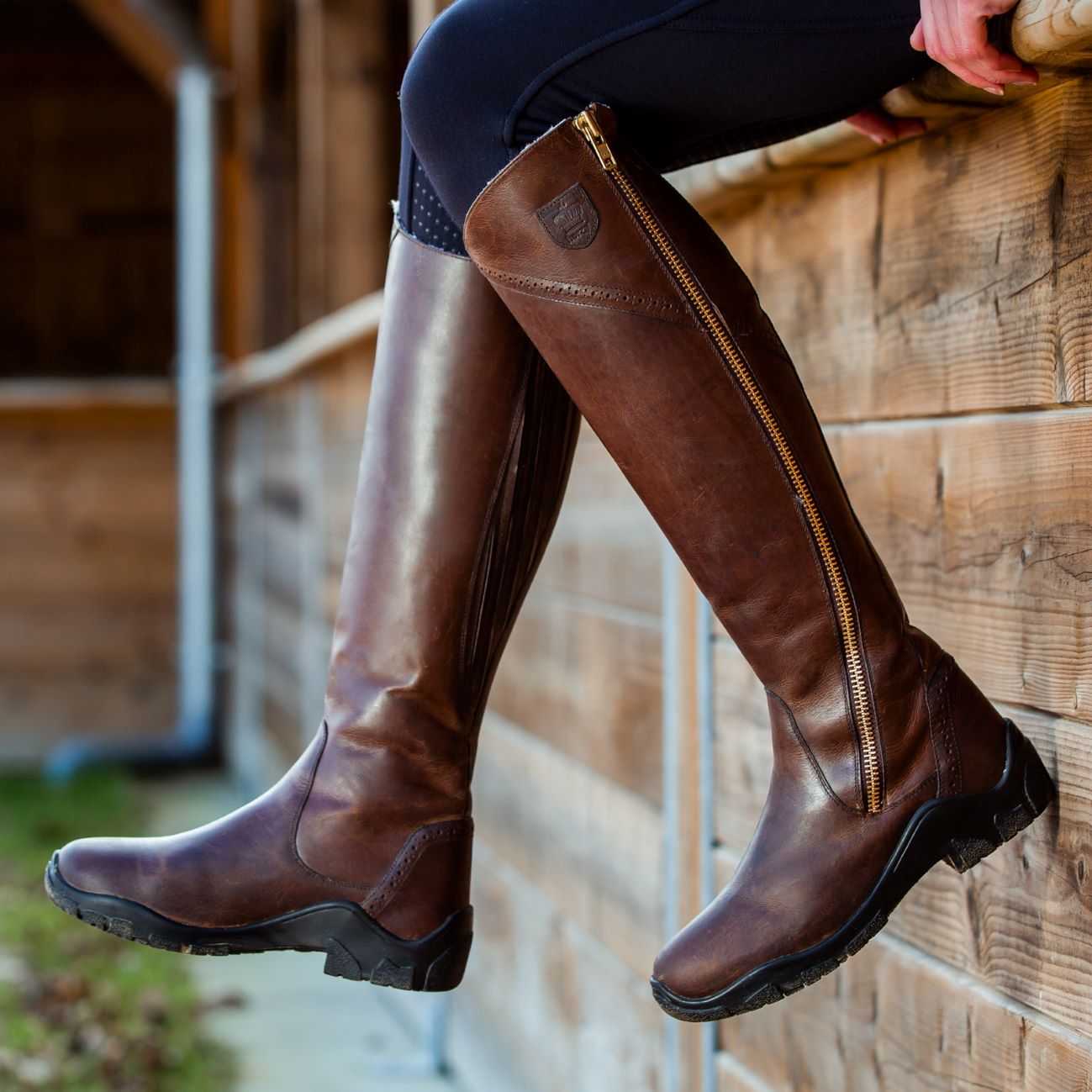

0 thoughts on “How To Store Shoes In Closet”